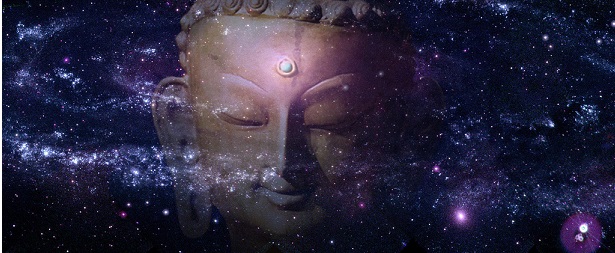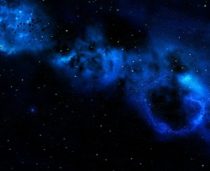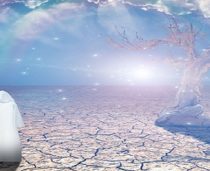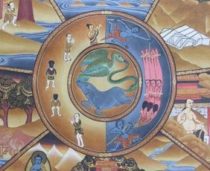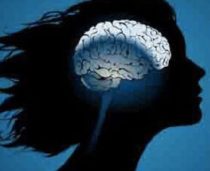I want to talk about what it means to have the Buddha Mind. It’s a Tibetan language they call Bodhicitta: Bodhi for the Buddha and Citta for the mind.
The thing is this. This is important to remember because this is the key function of the whole thing. Enlightenment is not anything you aren’t already experiencing. The enlightened state of the mind is a completely normal state of mind that occurs spontaneously without any training.
Now, you can also learn how to access it, and maybe equally importantly, you can learn to recognize it.
When I say you learn to recognize it, more or less what I’m saying is recognizing that you have a perspective, an altitude, a metaview of your life, thoughts, and processes.
The situation that many people experience, the only one that they recognize, is when they are within the thoughts of them. That would be a typical way that someone might describe the experience. Although they experience the state, the emptiness, like that perspective, we all experience these things from time to time.
The idea of the Zen Koan certainly doesn’t have to happen in a Zen monastery. I think the Zen Koan or any epiphany, if you will, can occur. There is, however, a difference. There is the enlightened mind that is more than a momentary experience. Then there is the Buddha Mind or this awakened mind experience that is a regular part of life.
I’ve often spoken to meditators and to individuals who attend meditation evening or session that the key to meditation is to have access to that state at any time. In other words, you shouldn’t have to be sitting to experience the meditative state.
Meditative state doesn’t require the chime of a bell or a bull, if you will. It does not require instruction.
What it wants to do, though, if you’re interested in pursuing these things and if you want to live your life in an enlightened way, with the perspective on the thinking with a metavision of who and what is moving through the universe that you’re manipulating and maneuvering as you go along, which could easily be said that there are different qualities of all these things.
Whether you’re flowing smoothly or you’re taking a less skillful course, let’s say perhaps, that the Bodhicitta, the Enlightened Mind can still be present.
I don’t like to use the words really, but I do think it’s interesting and fascinating that there is a culture wherein that culture is built around perfecting these teachings on enlightened mind. The entire culture, more or less, was built to support the monasteries, wherein that’s what they were studying. That’s what they were learning. They were writing it down; the vast libraries of information.
The little bit of Buddhism that I’ve been exposed to, which is I don’t know what it is from 100 hours perhaps of receiving the teachings, just even that, has been interesting and has given me an opportunity to look at life differently than I had before. So has the NLP training.
The NLP training gave me a structure. That’s one of the things about Buddhism. You can learn to recognize the structure.
What I’m saying about this enlightened mind and this meditative state is that once you learn to recognize the state, then you begin to be able to generate the state. If you can remember the state of being completely open and having childlike awe and if you recognize that, if you’re in it, and we do go into these states. That’s the thing. We have these epiphanies; we have the variety of things.
The thing about the meditation and Buddhism is an ability to recognize what in Buddhism they call the emptiness, the ability to recognize, which is kind of the metastate. The empty state is beyond all of the individualities and the boundaries of everything whether that’s an object, sound, or whatever. Everything exists within this vast empty space.
Once you recognize the vast empty space, once you recognize that the form itself, the actual structure it is you’re seeing, wall, building, cup, sound, guitar, voice -whatever happens to be is like a reflection in the glass.
Once you can see the glass, once you can see the mirror, once you get to understand the depth of the mirror, then you can say whatever is contained within the mirror is merely transitory in nature. The mirror itself is the phenomena – the mind itself.
The ability to perceive in itself is the real court of the phenomena. When you understand this, when you become the perception and the action, but become it as an experience fully, wholly, be mindful with it, be completely present. Allow it to be the vehicle to the openness. When you are in that open state, when you’re in that empty state wherein structure is unimportant, except that it lends itself to the emptiness of itself. I might be back tracking a little bit.
Recognizing the temporal nature; how temporary everything is. Even if whatever thing it is is here or isn’t here, the here still exists. We experience the here no matter where we are, which means that there’s an awful lot of here where there is nothing. If you consider how vast space is or when you go smaller than the structures we see and get on to the atomic level – the molecular level – once again you have space. Even just looking around us right now, there is space between everything that we see.
If you’re in the city and you see a power line up above, there’s all that space between each line. All that space between the lines in the ground. There are just tons and tons of space. If you’re in a room, well, there’s more space in the room than there are walls, right?
Even if there aren’t, on a molecular level, there’s more space in the wall than there is wall. There is matter there – yes. There are molecules, but there’s space between the molecules. They’re dense enough to get it where we see them to where the electrons that orbit them are binding them with other molecules that is creating whatever the substance is.
The number of electrons going around and their combinations with other atoms creates these molecules. These more complex structures and then those here together in a variety of ways, but nevertheless, the whole thing becomes whatever it looks like, but knowing that even that, no matter what it is in life, in the world, in the universe, it is contained within the spaciousness.
More easily said, the spaciousness is more vast than the universe itself. Everyone has the spaciousness. There’s more spaciousness everywhere than there is anything at all.
Now, the thing about, let’s say a black hole. That doesn’t seem to exist in the black hole. In the black hole, spaciousness is gone. I don’t know. I can’t quite to be an expert of everything, but it does seem to me that there’s got to be a point, because it still exists within the space. It still exists within the spaciousness.
This is the state of mind – the spacious state of mind. You may have it all the time. If you weren’t able to recognize it, if you weren’t trained to recognize it, or you didn’t train yourself to recognize it, you might walk around half in the state and not have the reference points to it.
What actually makes this spaciousness functional is what you have in it, what’s contained within that part of it – learn integrating because integrating is a good description perhaps of how that a spacious state of mind that enlightened state of mind – the very basis of meditation itself.
What becomes here is that you begin to see how that permeates all states of nature is everywhere and everything all the time: at least everywhere and everything that we’ll encounter.
I suppose you’d have to say, “It’s everywhere and everything all the time, and yet it’s none of those things; it’s no place and it’s no person or object. Yet, it is what’s me in about everything – the me in everything, the lack of content or ingredient.”
This state of mind, once you learned it, you can access the state of mind. You begin to utilize the state mind in your daily life.
Don’t expect all of your behaviors to be perfect, but do continue to familiarize yourself with the spacious nature and do continue to integrate that in your life.







